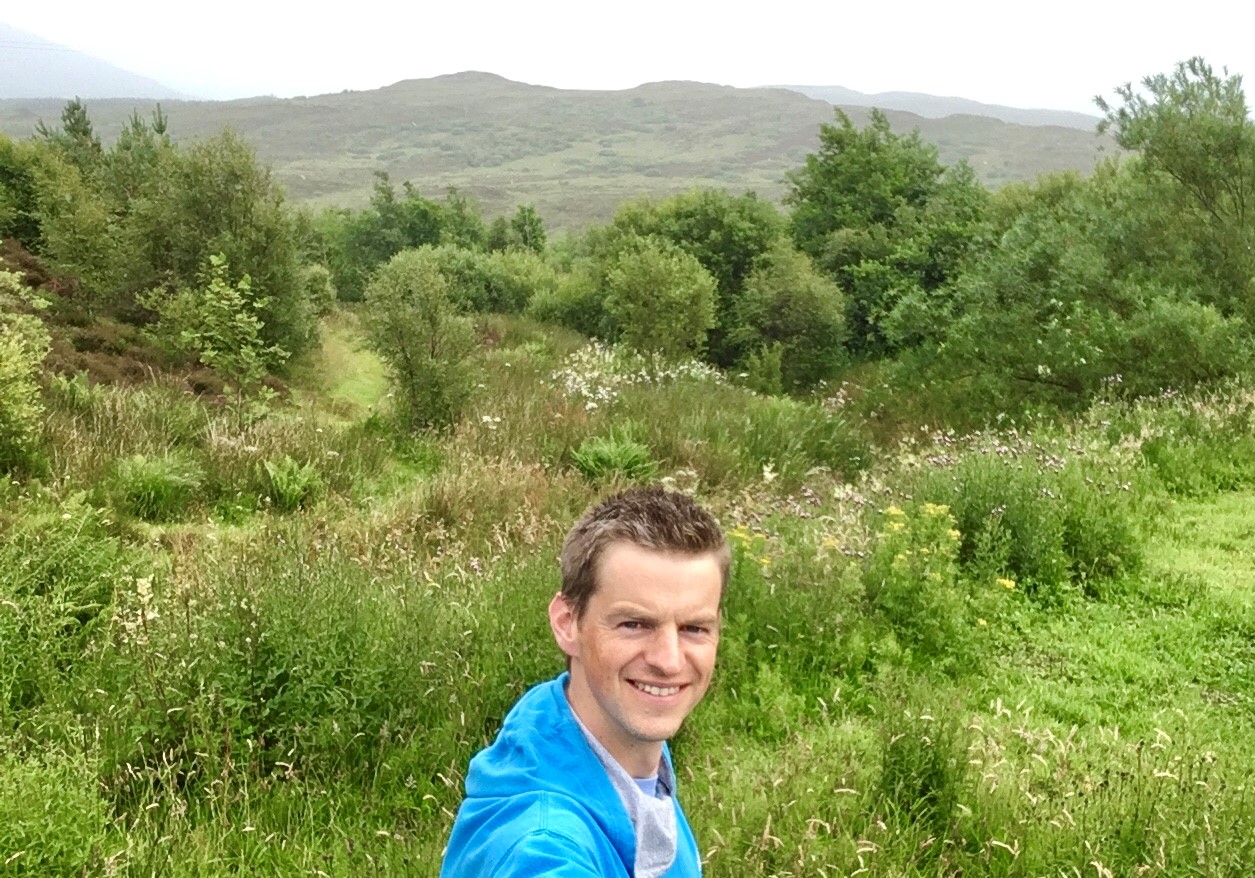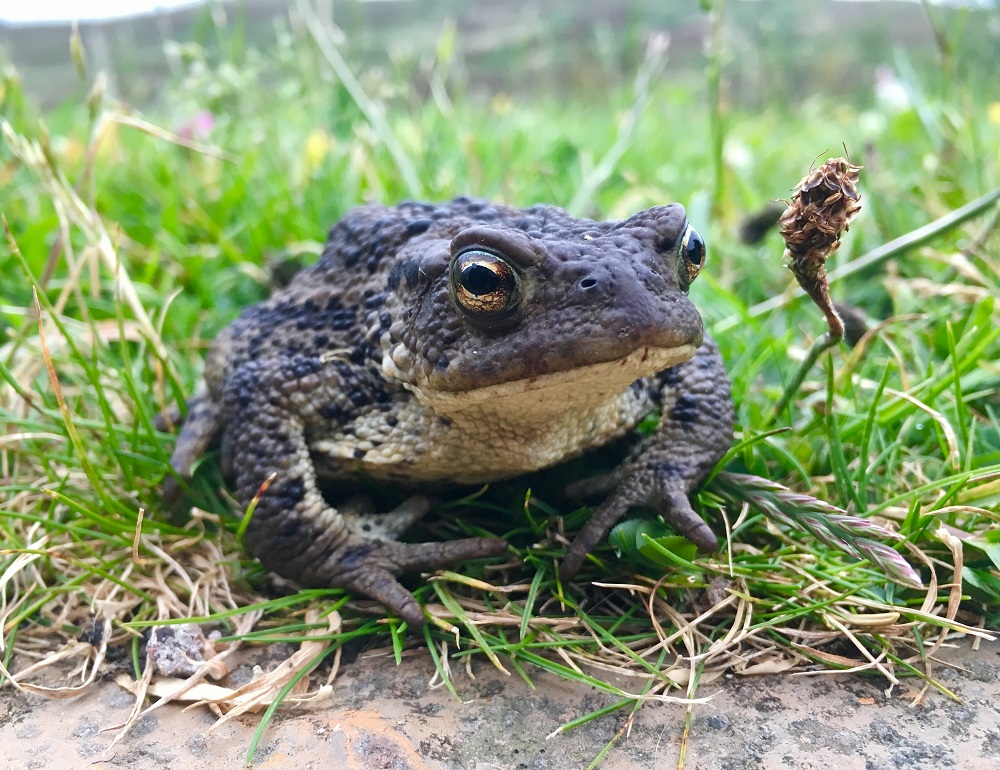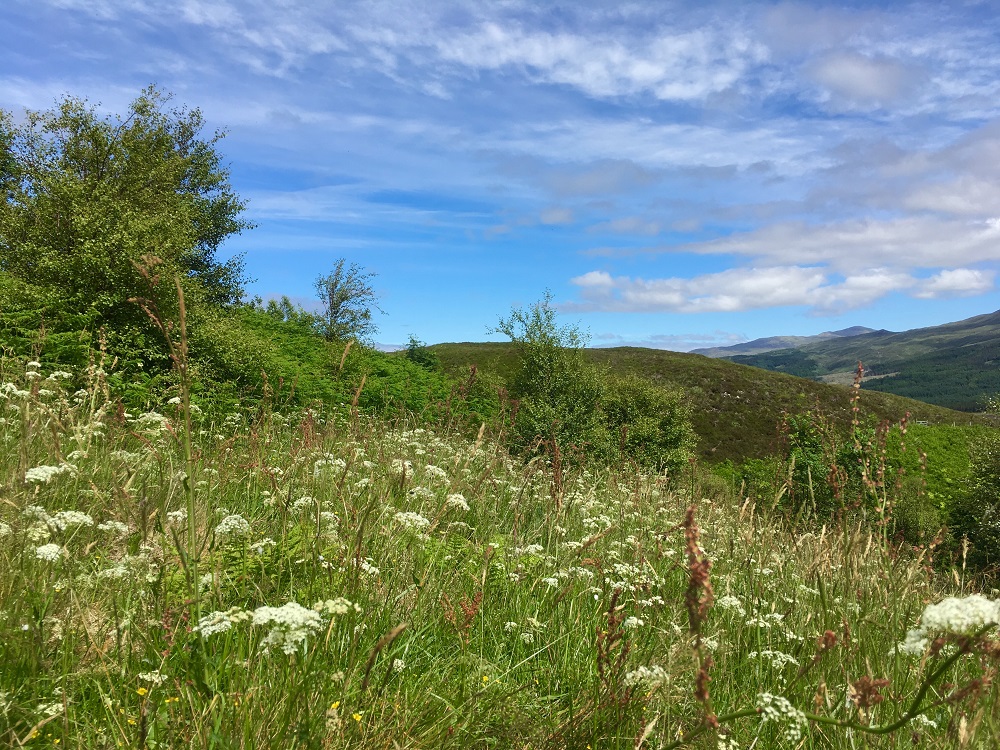
- Soil Association
- Our work in Scotland
- Scotland farming programmes
- Resources for farmers
- Agroforestry
- Benefits of agroforestry
- Agroforestry and crofting in Scotland

Agroforestry and crofting in Scotland
Phil Knott, 37, and his partner Laura Cunningham moved to 10-acre Wildlife Croft on Skye five years ago. They have planted trees strategically, to shelter their fruit bushes and trees and to enhance biodiversity and soil health, with a view to eventually producing organic food to sell.
Here Phil explains how:
- Trees offer shelter on their croft
- They are planting fruit in a silvoarable system
- They are farming for biodiversity and soil heath initially
- The crofting grant system is not really geared up for agroforestry

The reason we chose this croft was the trees
"I’m from a conservation background and I used to be a wildlife tour guide across the Scottish Highlands and Islands. I wanted land but, if you’re my age, a farm is too expensive, but you might be able to get a croft.
"The reason we chose this croft was the trees – we wanted a protective space, plus there were loads of different warblers singing when we looked around. There are a lot of bare land crofts on Skye, but if you’re on the west coast you need the shelter.
"When we came the trees were 10 years old – a mix of native species like alder, grey willow, scots pine and ash. the croft hadn’t been grazed for a long time and was very neglected, so in some areas there were waist-high rushes and holes full of water you could fall into.
"We’re planting in the species we don’t have. With a Woodland Trust Croft Woodlands Grant in 2017, we planted 1,700 trees, we built a tree nursery from fish boxes that had washed up on the shore! Another 1,500 are going in this winter that we raised from seed.
We’ve pruned for high level fruit trees so we can eventually graze stock underneath
We wanted to grow fruit trees – apples, pears, medlar, plums, cherries –they need the cover of other trees. It also means there’s potential for fruit bushes – currants, blueberries etc. We’ve pruned for high level fruit trees so we can eventually graze stock underneath, and we’re pollarding others for tree hay. We planted the fruit five years ago and we already have all the apples we need, plus all the cider and juice we can drink! We can’t keep up with the Discovery apples.
"We’ve managed wildflower meadows in the trees – it’s not high forest, and we maximise solar energy by pollarding. Open space can be managed space – we’re not rewilding, we’re just working at a slower pace than many would like. You could say we’re managing the whole croft for pollinators, as we want to grow food using natural processes. It’s always a question of money versus time, and we have time.

Picture: Phil and Laura are managing the croft for biodiversity. CREDIT Phil Knott
"Shelter is key, for everything – it gives us more options for growing. The trees enrich the soil as they grow, through leaf litter and they add to nutrient cycling, so day by day we know our soil is improving. We have ducks and hens that scratch the leaves to break up the rank nature of it, which otherwise you have to do yourself.
We're managing land for biodiversity, shelter and food production
"Our aims are:
1/ to manage the habitat for biodiversity
2/ continue to improve shelter and diversity
3/ to produce food for ourselves
4/ see where we are and if we can supply food to others- perhaps hotels and retail
"It’s very slow growth – we’re building year on year, with veg for example, we’re building polytunnels and lots of beds. We’re also growing trees for others, who want to plant up their own crofts.
"We want to work with animals, we want to grow good quality food, we want high biodiversity. We want to give ourselves and our children more options from this croft.

Picture: Wildflower meadows are part of managing for biodiversity on the croft. CREDIT Phil Knott
"As a young crofter I want to experiment with the trees: using them for firewood, biodiversity, securing carbon, woodchip mulch and shelter - from the salt winds and days of gales - so fruit buds and blossom don’t get blasted and salted. The trees have different properties: the alders fix nitrogen, and round them no rushes grow. Having willow nearby boosts the health of the fruit trees – for example, willow bark in the fruit tree mulch helps get rid of scab.
"The grey willow is chock-a-block with bees when in flower in early spring, it’s buzzing. A sheltered environment Is better for pollinators, but it does equal midges so there’s a trade-off there!
"CAGS (the Crofting Agricultural Grant Scheme for Scotland) is not geared up for agroforestry – fruit trees are not eligible, for example. We want to replace the deer fence that came with the original trees, but we can’t. They’ve only heard of shelter belts. But it [agroforestry] doesn’t necessarily take away productivity – and with an eye to the future it provides soil health, shelter and can run hand in hand with any operation – stock or horticulture.
"Grants to diversify would be nice, but there’s no talk of that for crofting. SRDP (Scottish Regional Development Programme) money is mostly for cowsheds. For horticulture you need a full business plan to get the CAGS grant. If you’ve got stock you don’t need a business plan. "
Follow Phil on Instagram @wildlifecroftskye and on Facebook @WildlifeSkye
Want to learn more about agroforestry?
Scotland farming homepage
Back to the Scotland homepageWant to learn more about agroforestry?

